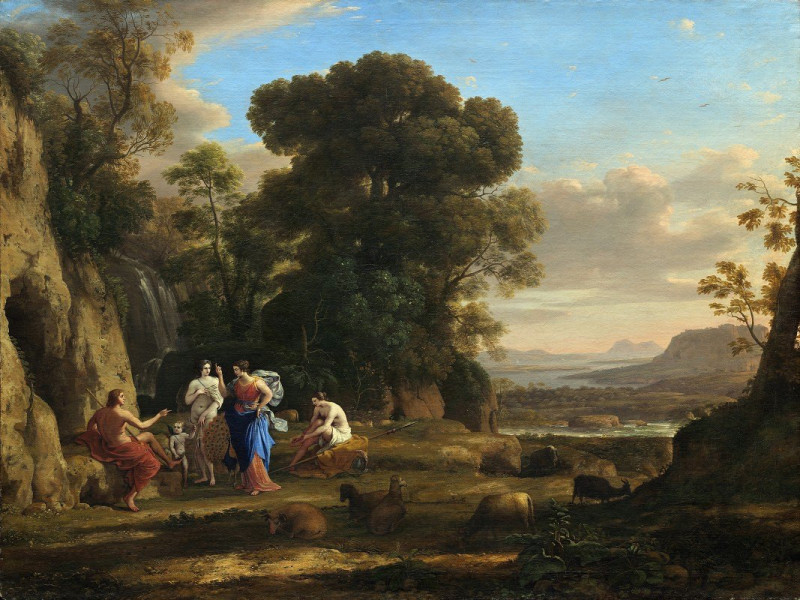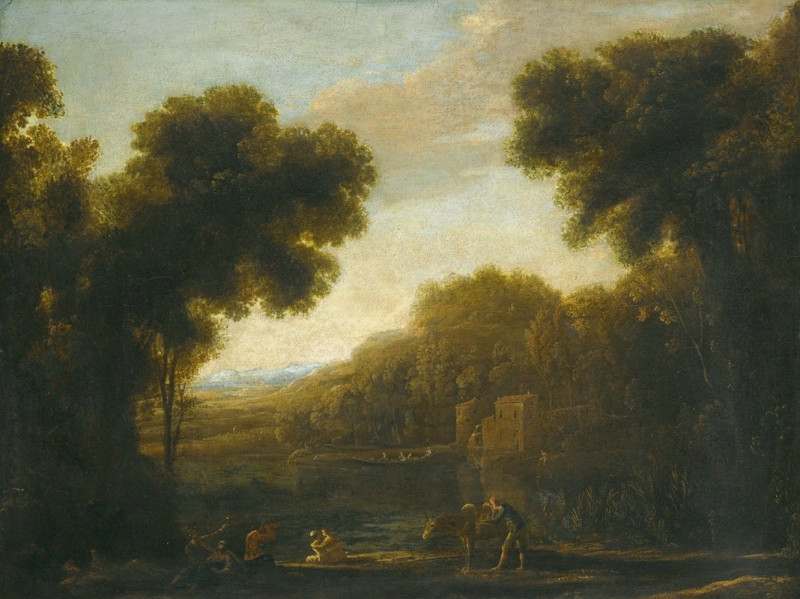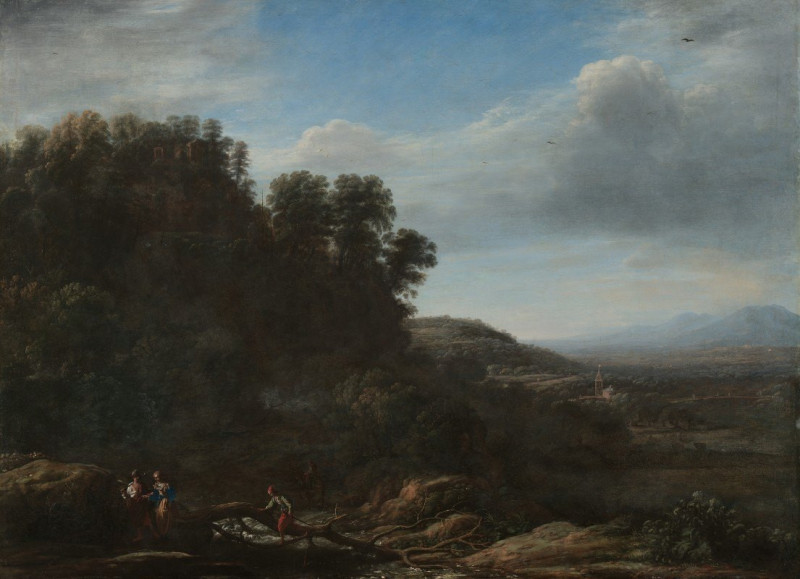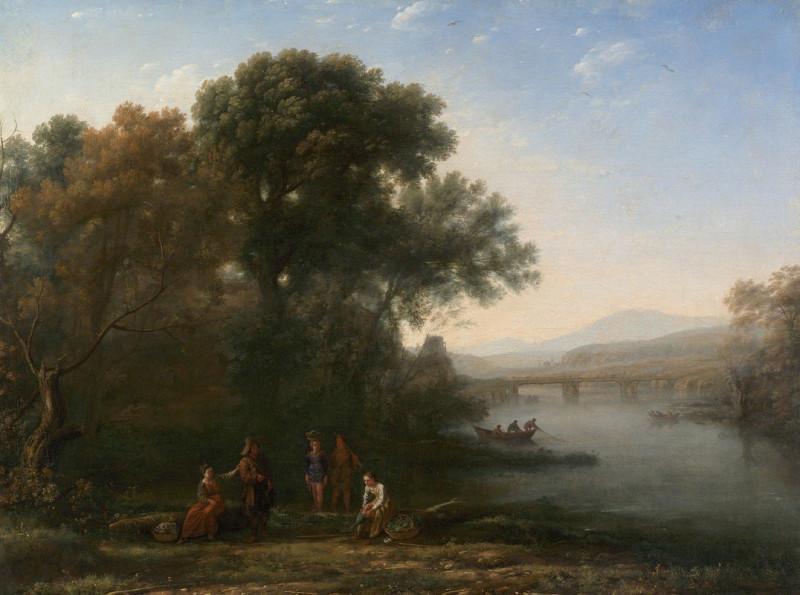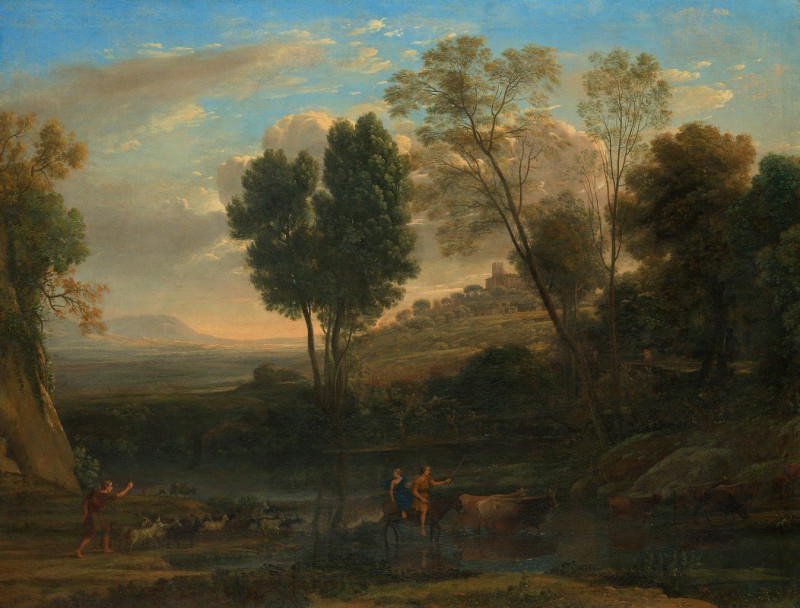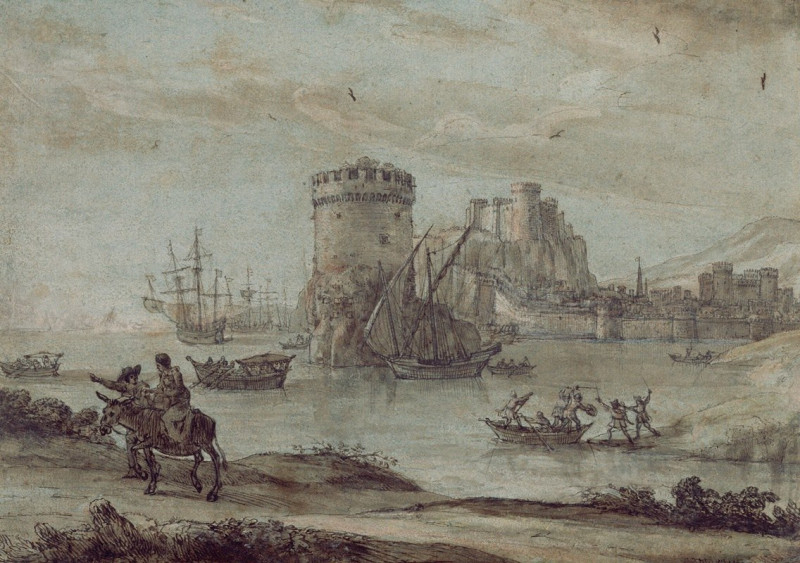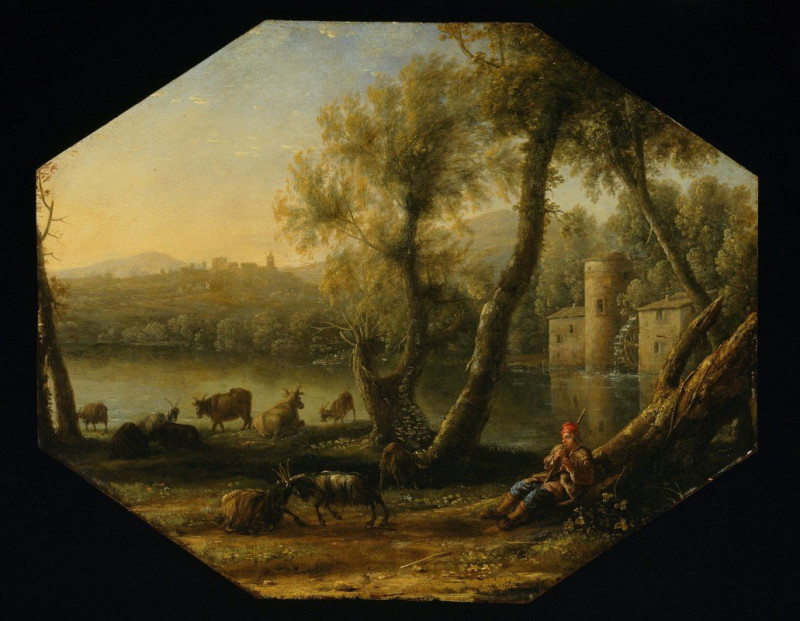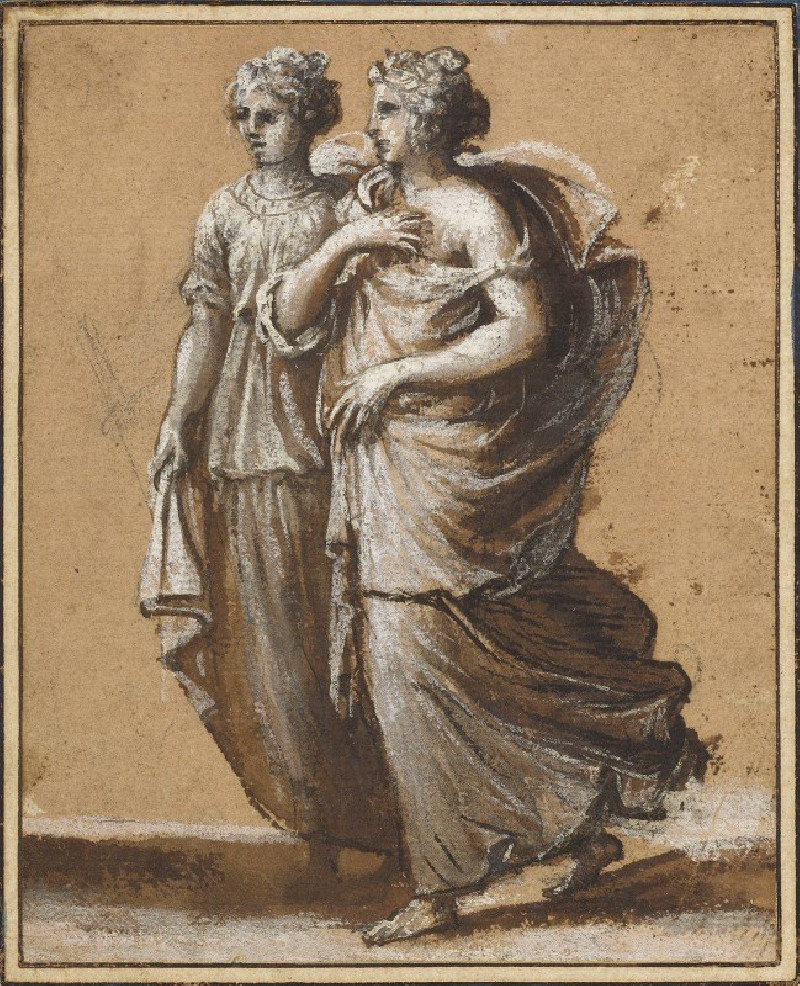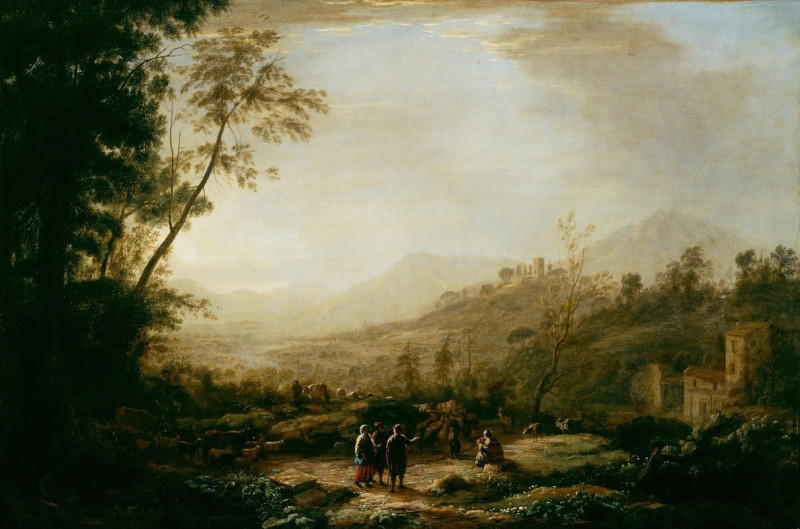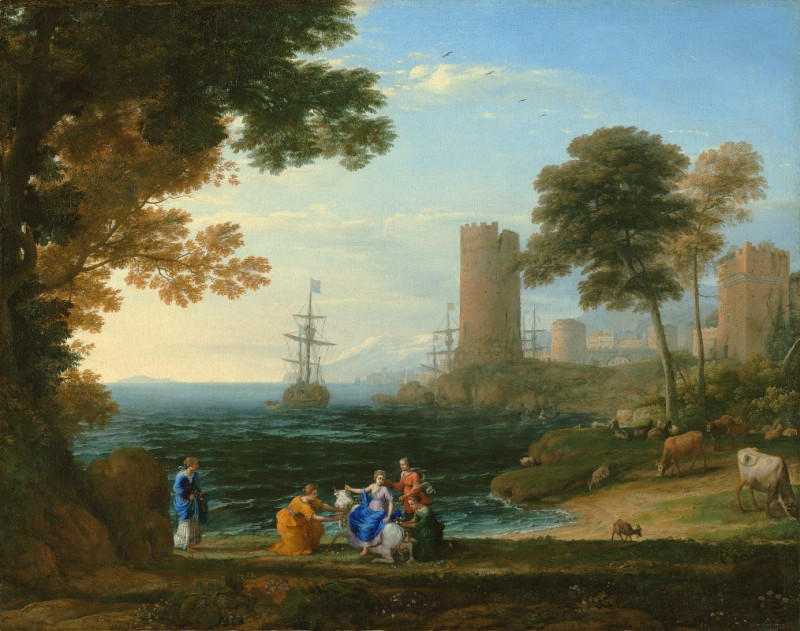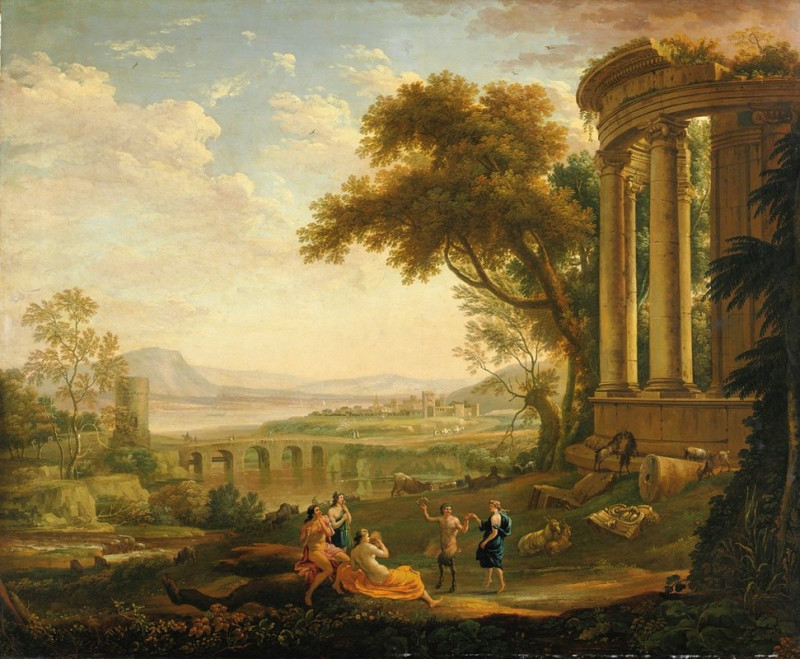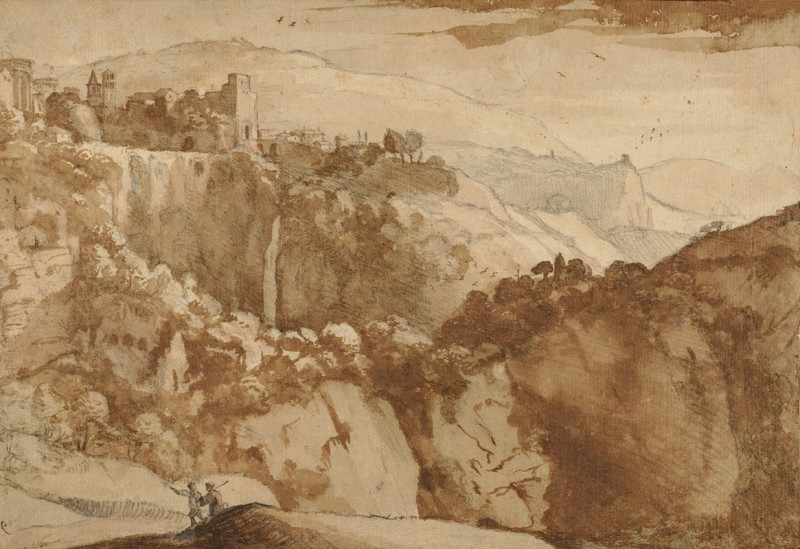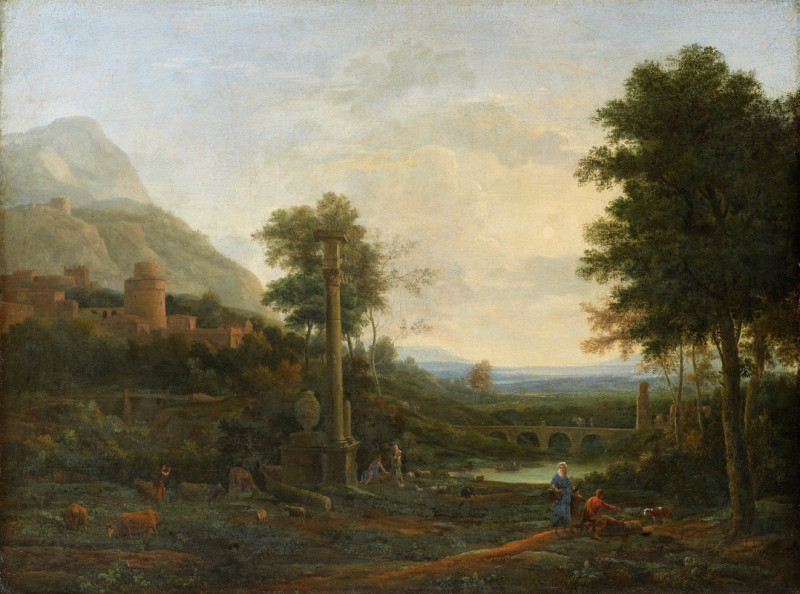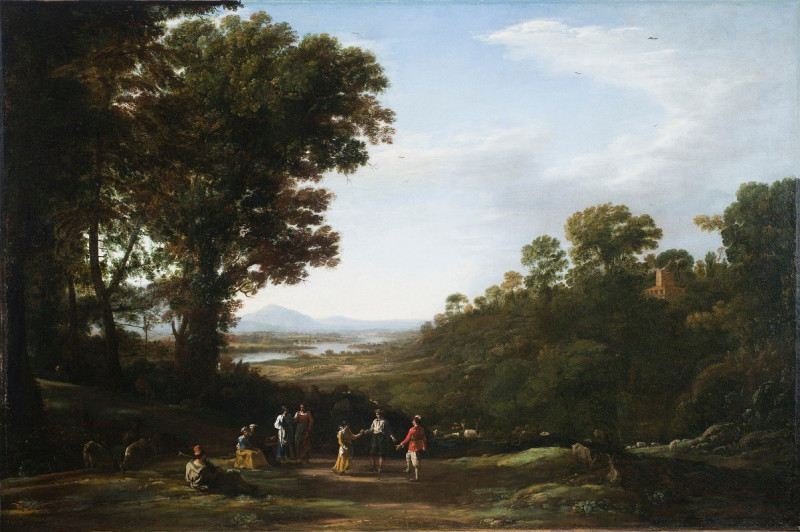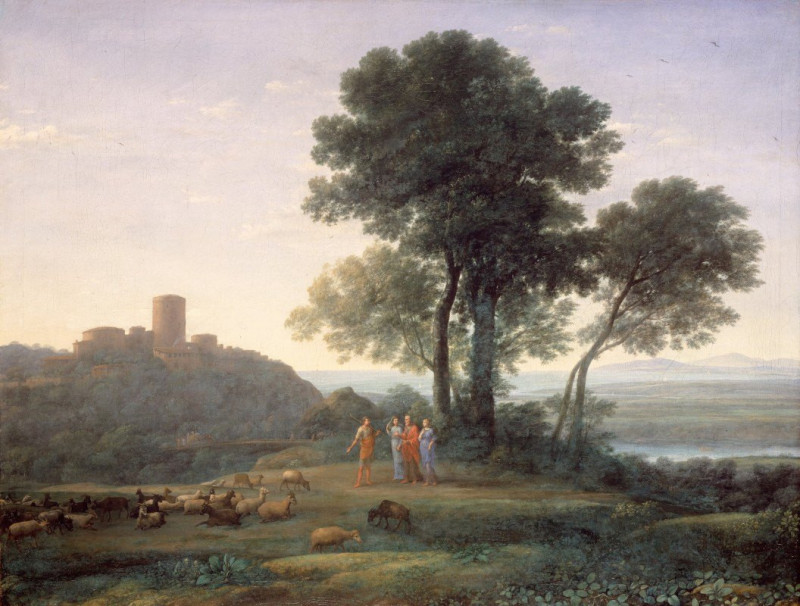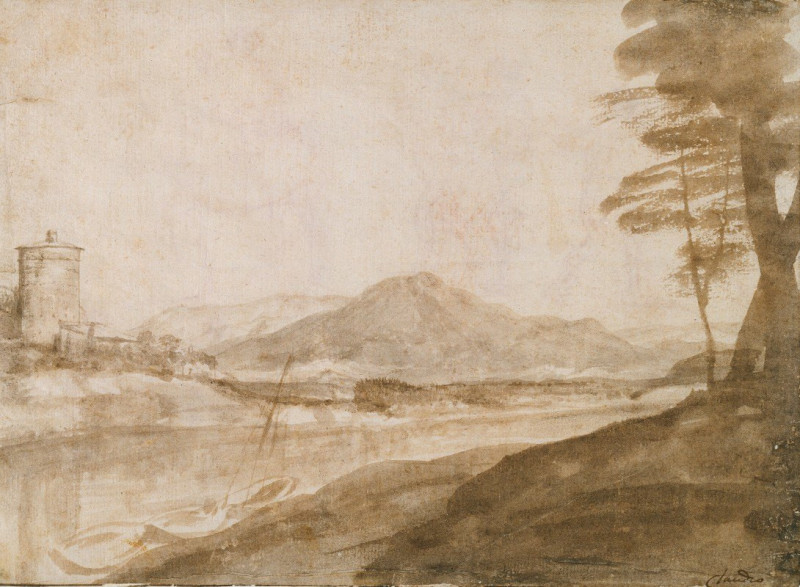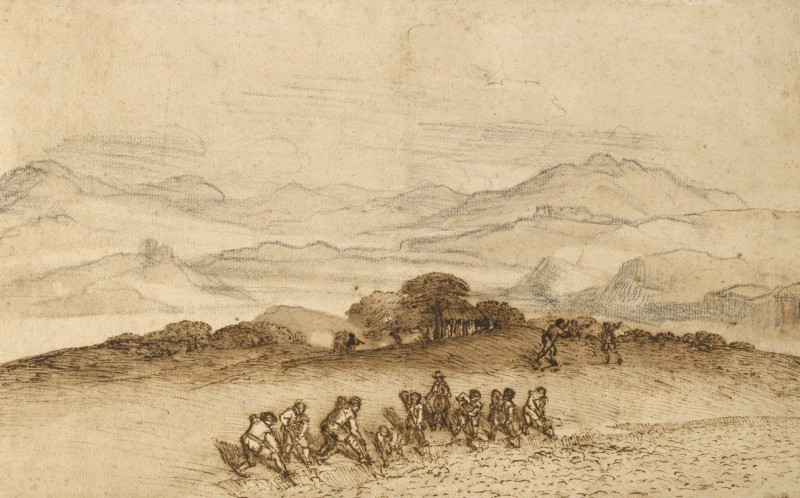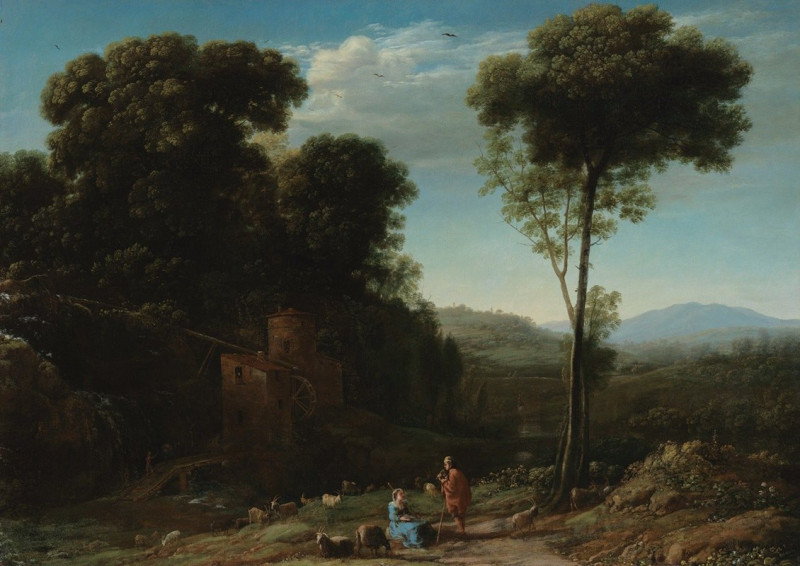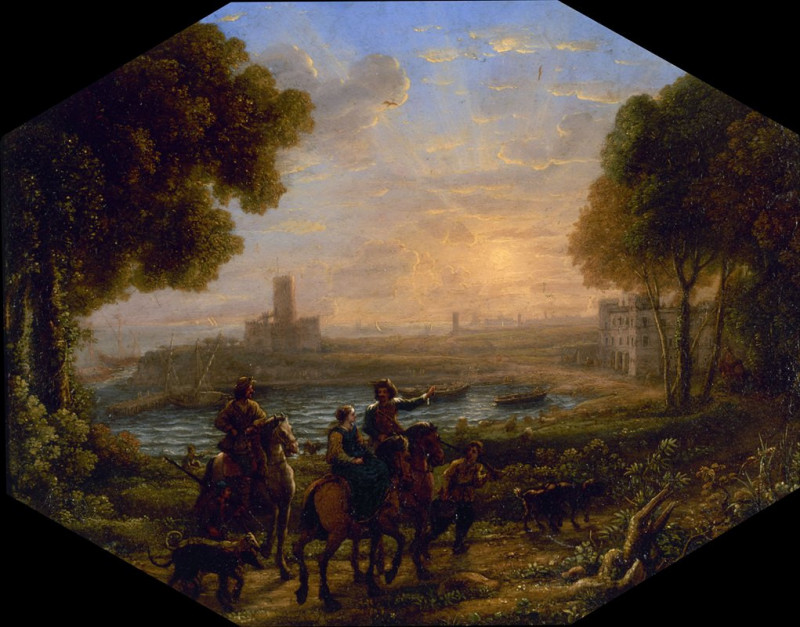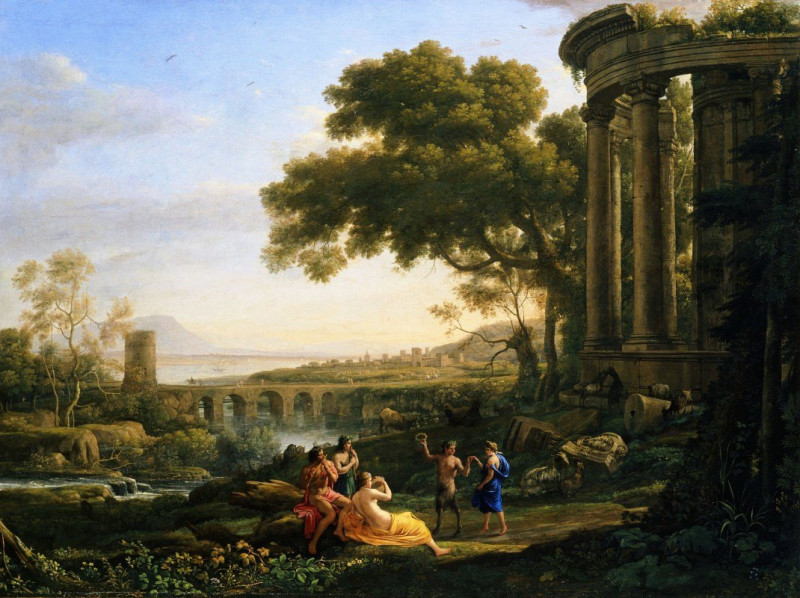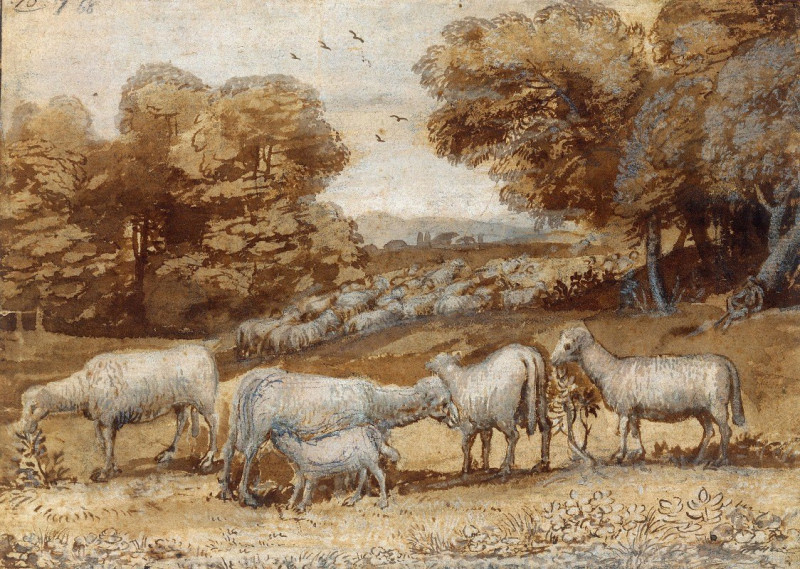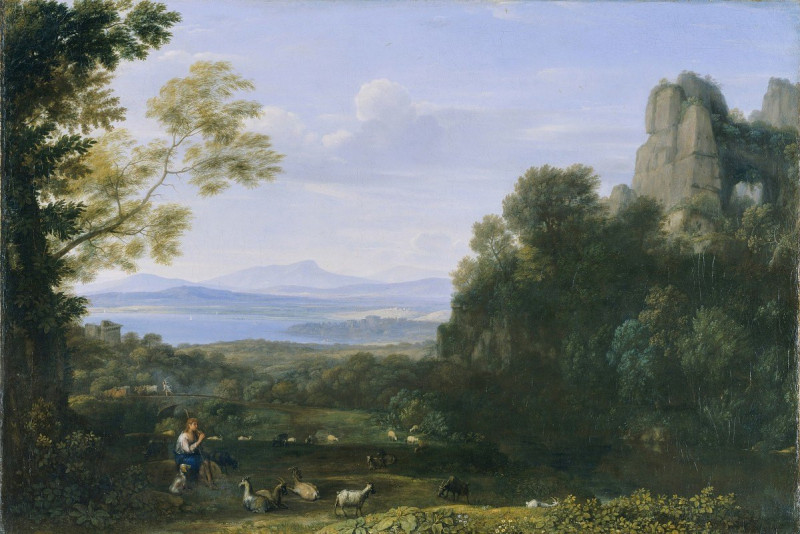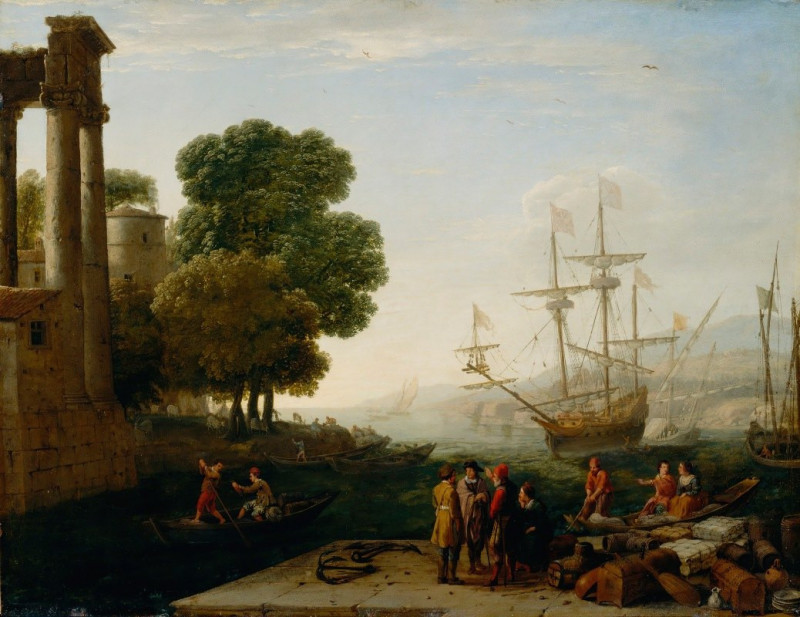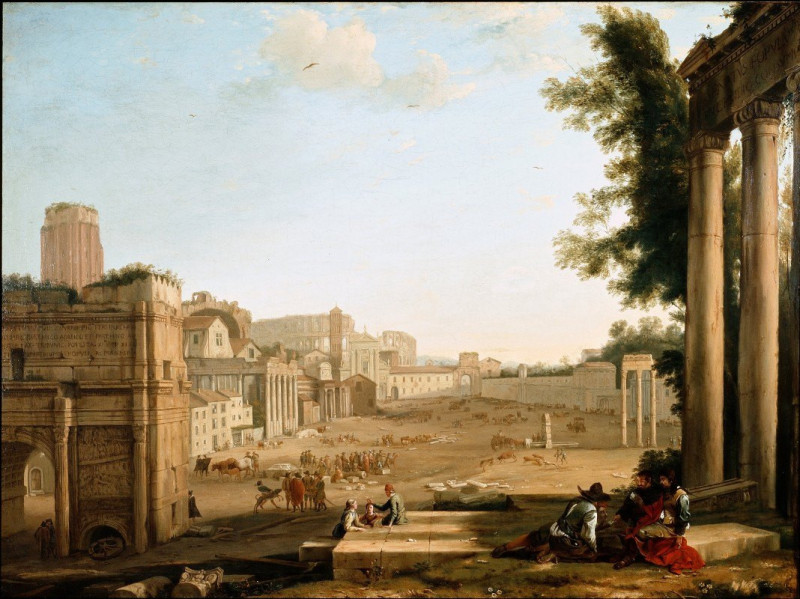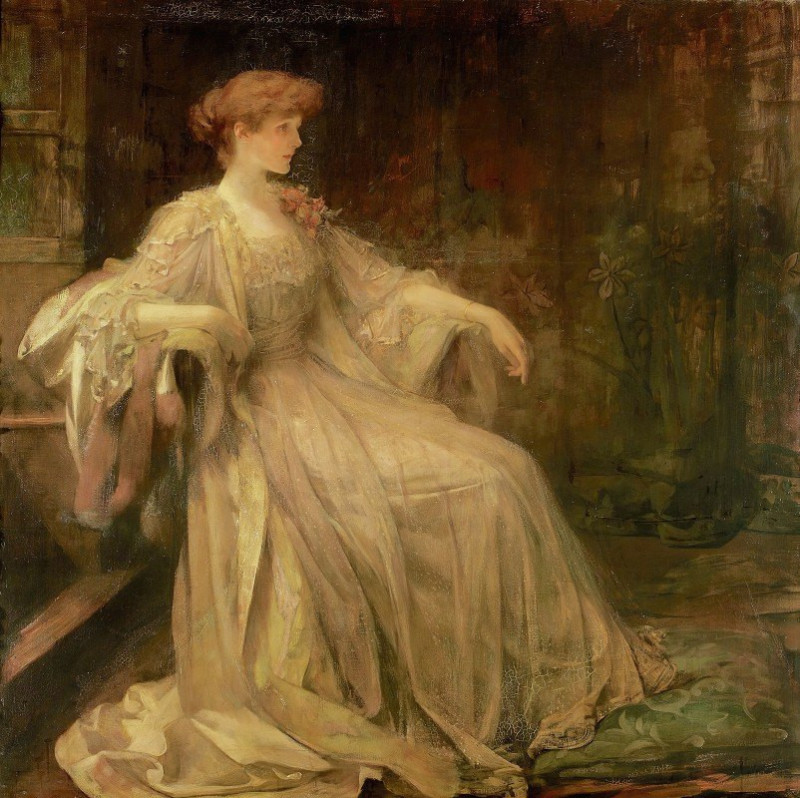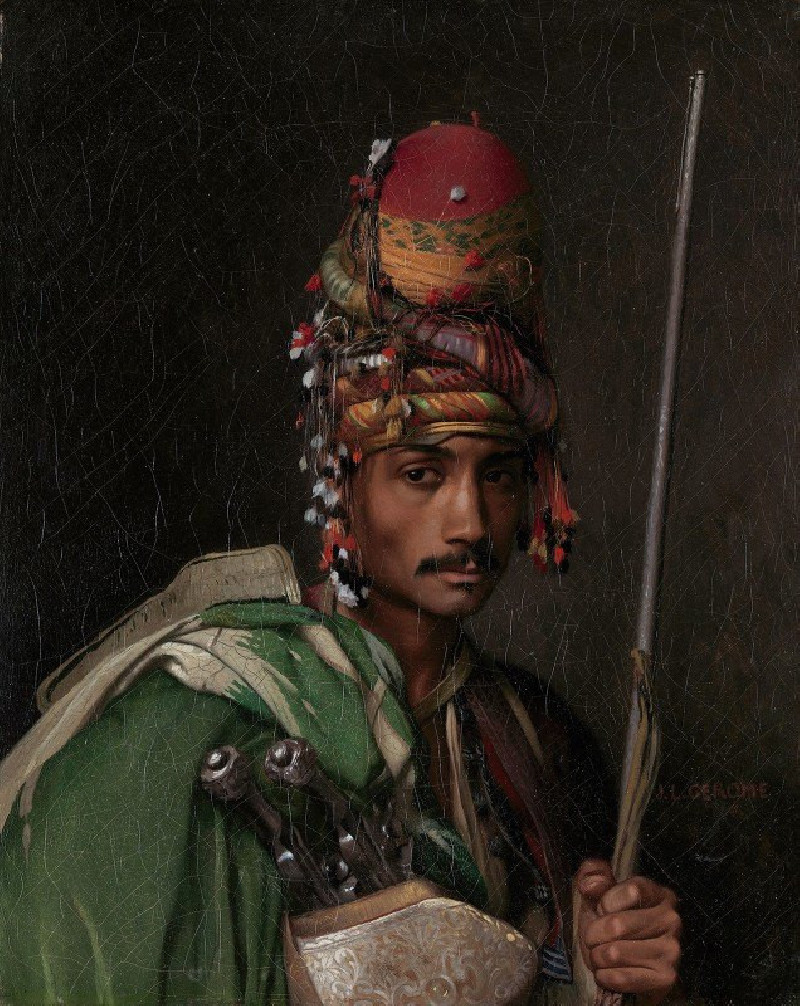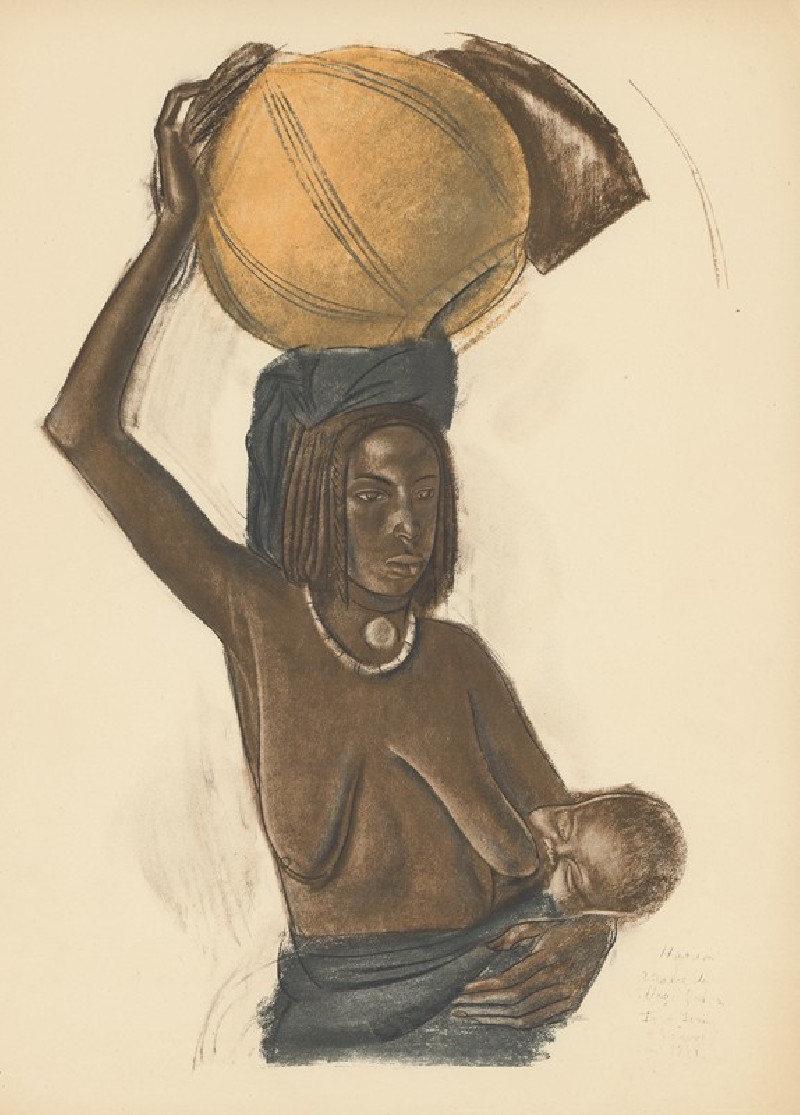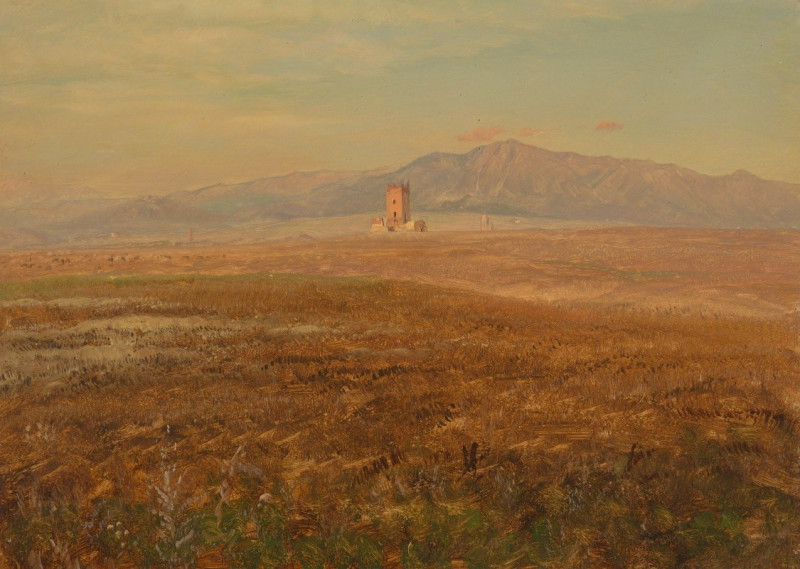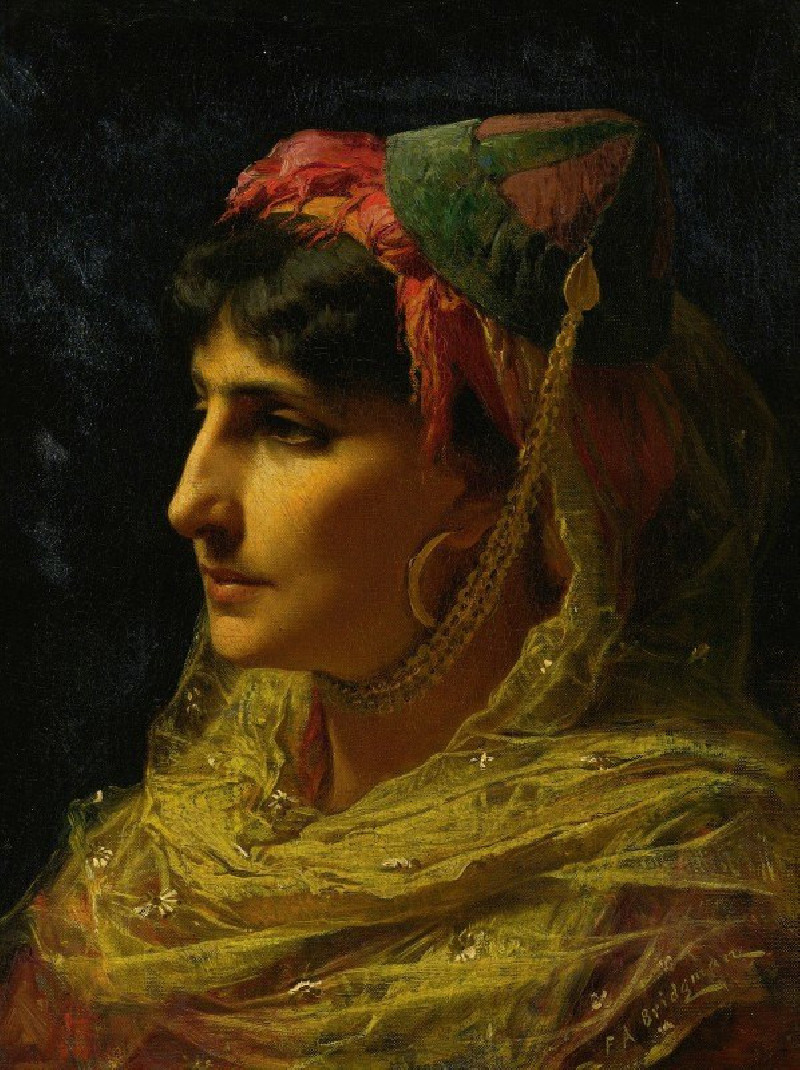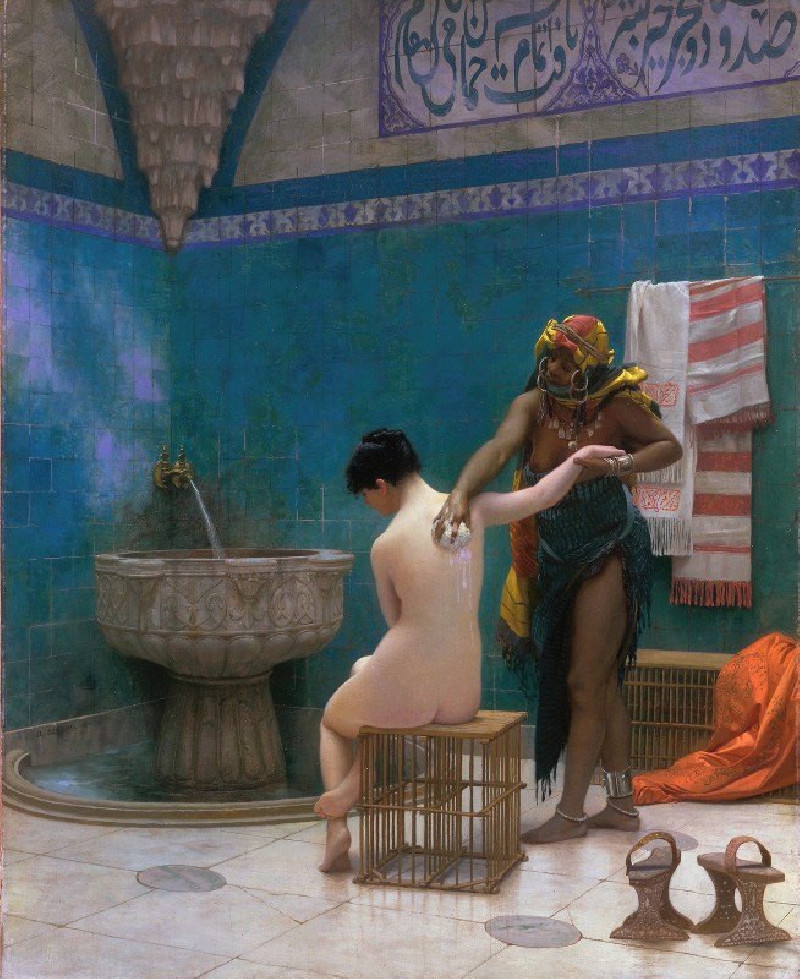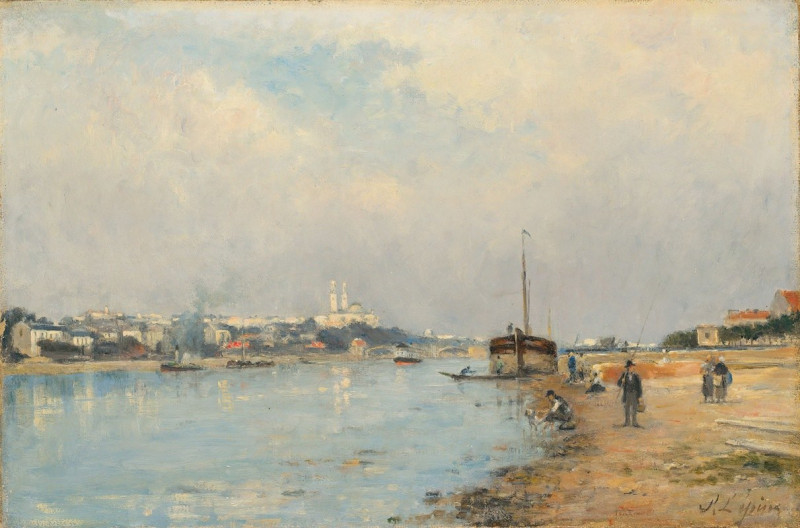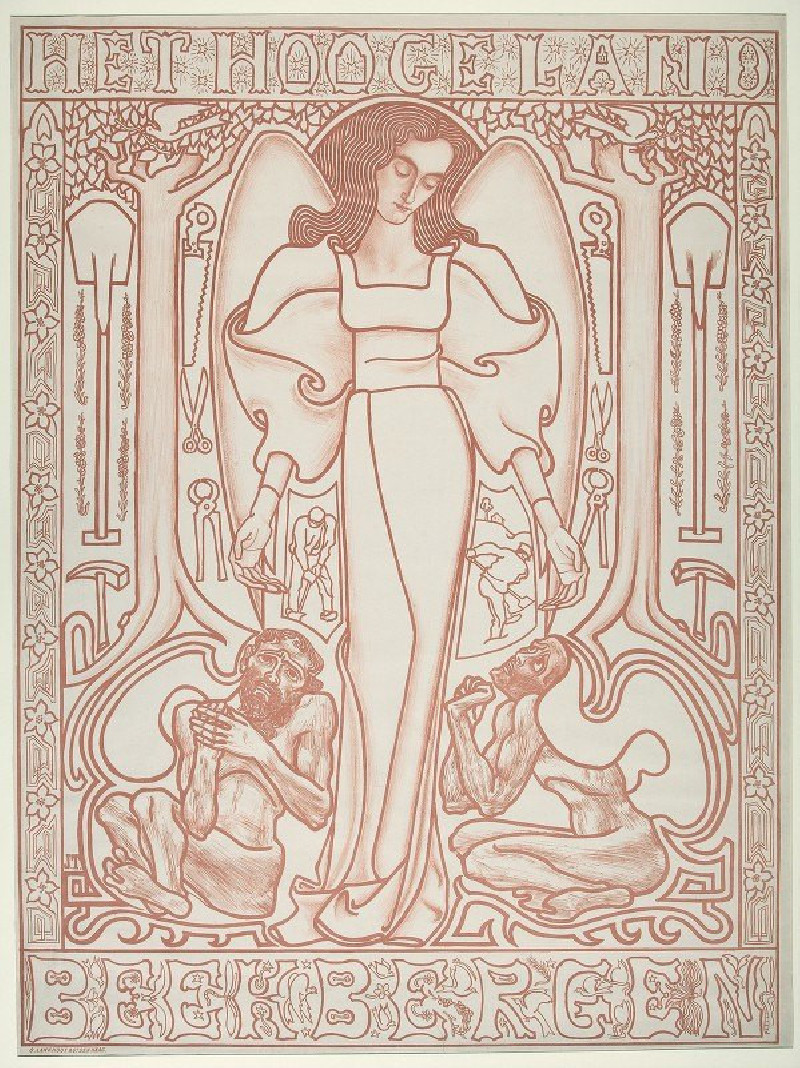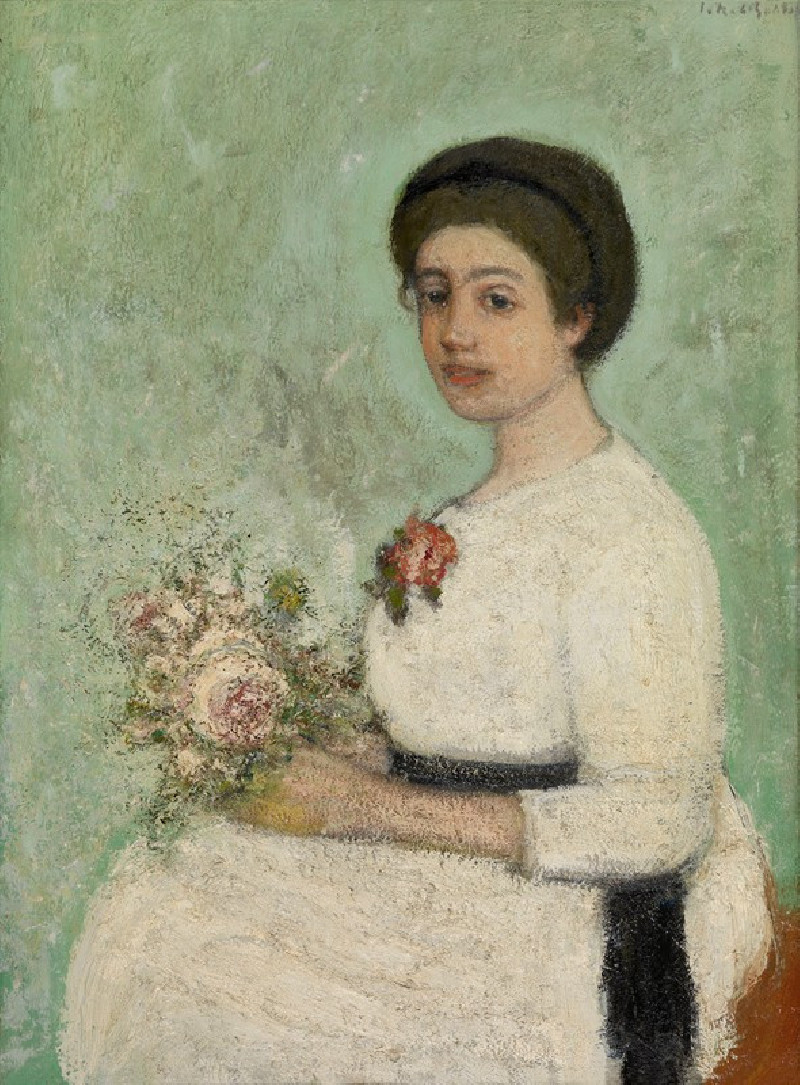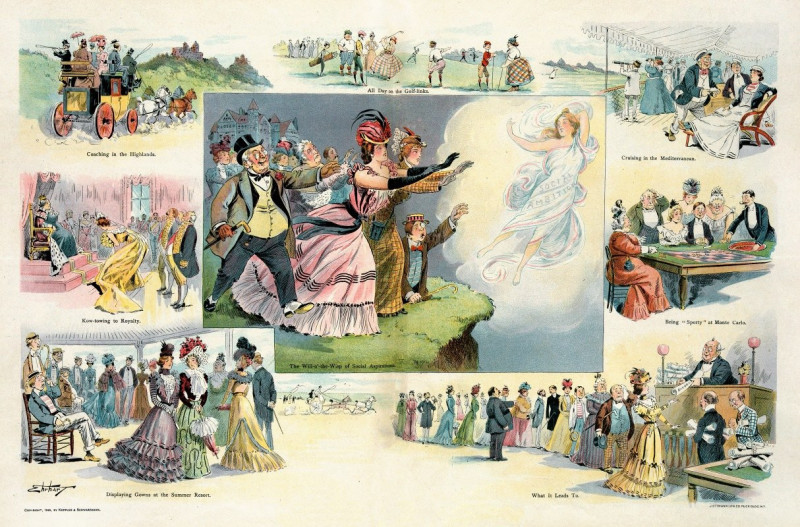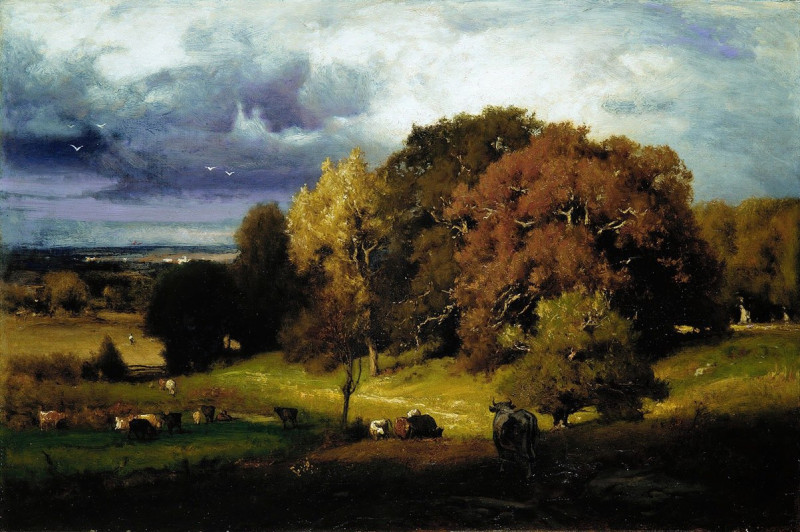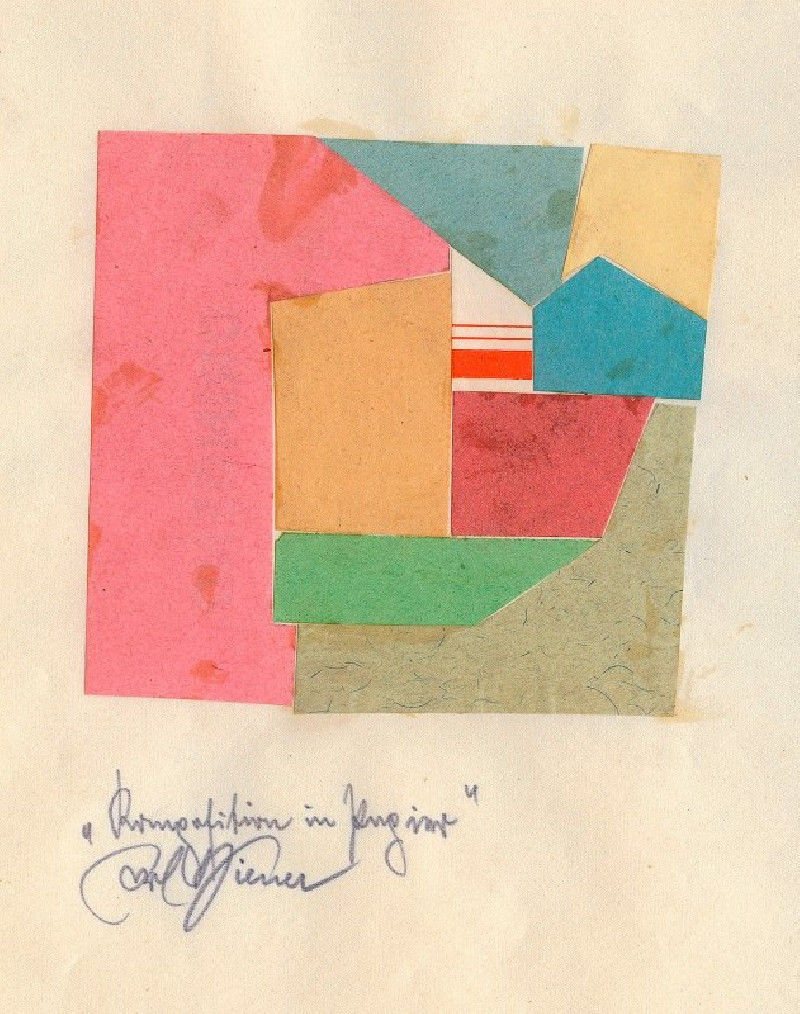The Judgment of Paris (1645-1646)
Technique: Giclée quality print
Recommended by our customers
More about this artwork
The painting "The Judgment of Paris" by Claude Lorrain, composed during 1645-1646, is a captivating visual storytelling piece exploring a legendary event from mythology. The scene takes place in a lush, idyllic landscape that perfectly showcases Lorrain's mastery in depicting nature and light. The artist's signature style of incorporating large trees, distant horizons, and soft, diffused lighting is evident, creating a serene backdrop to the dramatic moment unfolding.The narrative at the heart of the composition is taken from classical mythology. Paris, a Trojan prince depicted seated on the right, is entrusted with the task of deciding who among the three goddesses — Hera, Athena, and Aphrodite — is the fairest. Each goddess stands, presenting herself to Paris, who must award a golden apple to the most beautiful. Their expressions and gestures convey a mix of anticipation and tension, knowing the profound repercussions this divine beauty contest will hold.In the painting, each figure is rendered with delicate attention to detail, from the flowing garments of the goddesses to the thoughtful pose of Paris. The interaction between the figures is subtly portrayed, suggesting the complexities of vanity and rivalry. Meanwhile, the inclusion of other elements, such as a resting shepherd, livestock, and even small details like birds in the sky, contribute to a lively sense of place and moment."The Judgment of Paris" not only captures a mythical episode but also serves as a testament to Claude Lorrain’s ability to blend narrative, natural beauty, and atmospheric effects into a harmonious visual experience.
Delivery
Returns
Claude Lorrain (1600 – 23 November 1682) was a French painter, draughtsman and etcher of the Baroque era. He spent most of his life in Italy, and is one of the earliest important artists, apart from his contemporaries in Dutch Golden Age painting, to concentrate on landscape painting. His landscapes are usually turned into the more prestigious genre of history paintings by the addition of a few small figures, typically representing a scene from the Bible or classical mythology.

